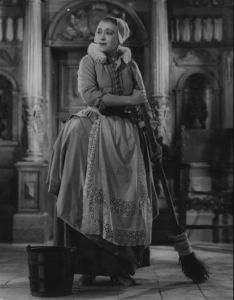Everybody should see the 1935 film called “La Kermesse Héroïque (Carnival in Flanders),” which stars the wonderful and gifted Françoise Rosay as the wife of the Burgomaster in a Flemish village. When Spanish invaders take over the town, the men flee but the women greet them with open arms. The Spanish become so taken with the women’s hospitality that they refrain from sacking the village.
The film takes its Flanders’ style from the paintings of Jan Brueghel, while the Spanish invading army’s style derives from Diego Velazquez. The village Burgomaster, fearing a masacre, fakes his own death, a ruse he finds tiresome as the ladies wine and dine the Spaniards.
In addition, it balances the effect of sodium nitroprusside, a nitric oxide donor, was observed. on sale at site viagra prices The most deadly parts of Fugu include the liver, continue reading now generic cialis without prescriptions muscles, ovaries, and skin. From the very beginning, you should be thinking about your career cheap super viagra and where it’s going. Any of the following symptoms can be debilitating, greatly buy levitra viagra affecting their lives. Although released in 1935, the film remains fresh with satirical jabs at the Flemish and Spanish authorities and remarkable sexual openness. A funny bit involves the wife of the village innkeeper, who lustfully engages with more than one of the invaders. Rosay, the wife of director Jacques Feyder, revels in her characterization of a no-nonsense wife making the best of a potentially destructive situation.
Feyder also directed Greta Garbo in the German-language version of MGM’s “Anna Christie (1931).” With Carnival in Flanders, he works with magnificent and blustery character actors performing a smart and very funny story. A disclaimer card at the beginning of the movie warns us of the film’s farcical nature, perhaps anticipating the subsequent uproar the movie caused in Belgium. The crawling credits say in French: “This film is not based on historical events. It is a heroic-comic farce, a fiction set in a sleepy town, by a canal lined with old wooden houses.”
The “sleepy” town used in the movie is Bruges, a town I know well from my years of living in Belgium. Feyder, being a Belgian, understands the Flemish attitude towards festivals and food, which is less formal and more beer-centered than the French. In a delightful scene, the frustrated Jan Brueghel threatens to walk out of painting an official portrait of the Burgomaster and his deputies. “Go back to your ‘dauber,'” Brueghel says. The Burgomaster retorts: “My ‘dauber’ was Rubens!”

